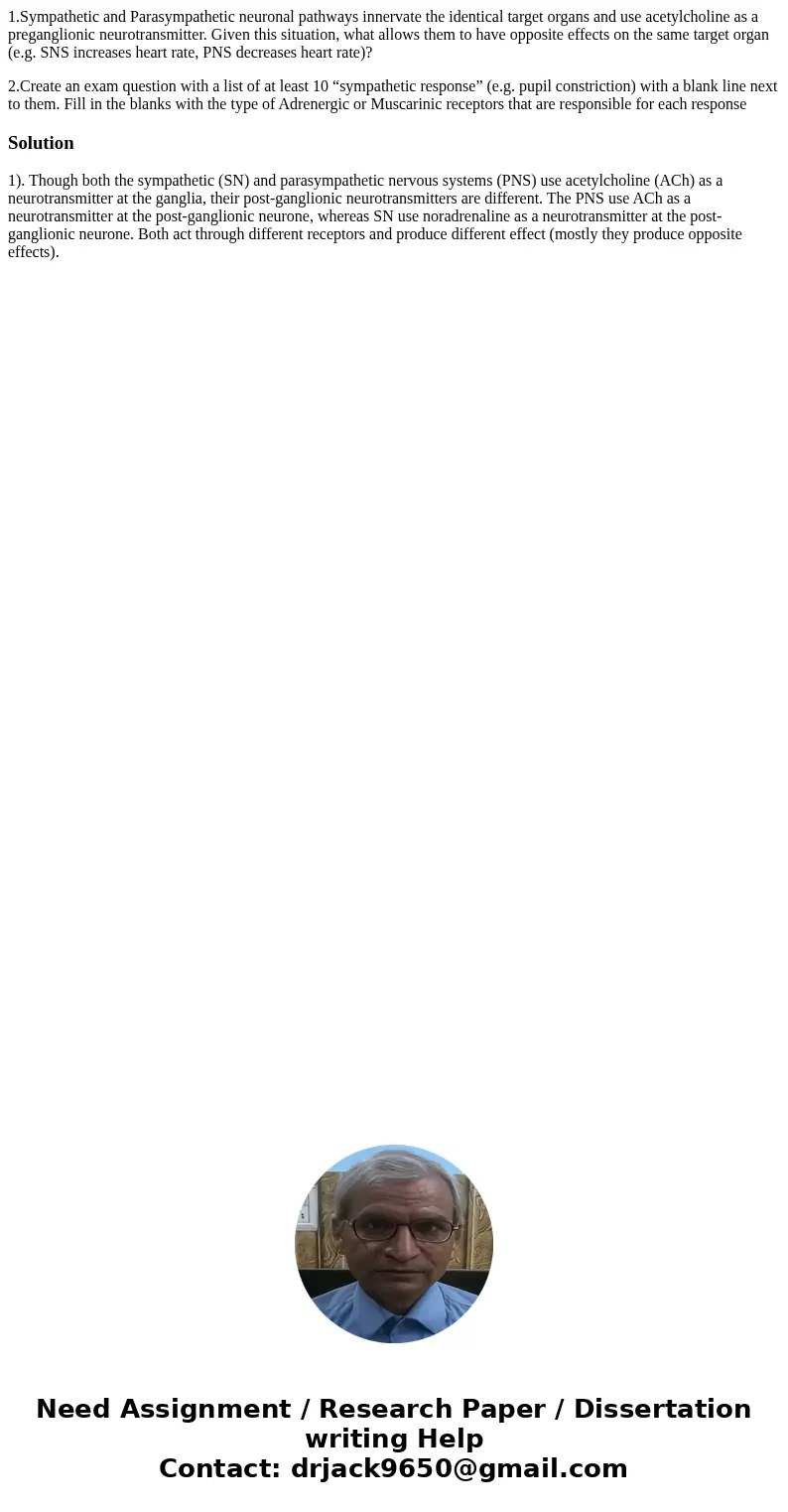1Sympathetic and Parasympathetic neuronal pathways innervate
1.Sympathetic and Parasympathetic neuronal pathways innervate the identical target organs and use acetylcholine as a preganglionic neurotransmitter. Given this situation, what allows them to have opposite effects on the same target organ (e.g. SNS increases heart rate, PNS decreases heart rate)?
2.Create an exam question with a list of at least 10 “sympathetic response” (e.g. pupil constriction) with a blank line next to them. Fill in the blanks with the type of Adrenergic or Muscarinic receptors that are responsible for each response
Solution
1). Though both the sympathetic (SN) and parasympathetic nervous systems (PNS) use acetylcholine (ACh) as a neurotransmitter at the ganglia, their post-ganglionic neurotransmitters are different. The PNS use ACh as a neurotransmitter at the post-ganglionic neurone, whereas SN use noradrenaline as a neurotransmitter at the post-ganglionic neurone. Both act through different receptors and produce different effect (mostly they produce opposite effects).

 Homework Sourse
Homework Sourse